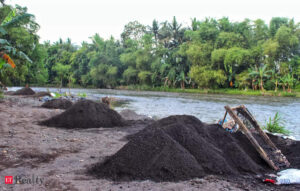Structural issues leading to DAP shortage need fixing

With the South-West monsoon showering bountiful rains and improving reservoir storage, the farming community was looking forward to a bumper rabi crop. But there’s now a risk that the short supply of Di Ammonium Phosphate (DAP), a critical fertilizer, may stall the winter crop. While the Centre has tried to downplay the shortage, industry data show that it is real.
DAP sales volumes in April-September 2024 at 45.7 lakh tonnes were 27 per cent below last year’s levels. Domestic production (21.5 lakh tonnes) was only slightly below last year’s 23.3 lakh tonnes, but a sharp decline in imports (19.7 lakh tonnes against 34.5 lakh tonnes) has led to a yawning supply shortfall. While delayed arrivals of contracted imports due to the Red Sea crisis have played a part this year, the chronic demand-supply gap in DAP which has persisted for well over a decade, points to structural issues. In the last 12 years, India’s production of DAP has fluctuated between 35 lakh tonnes and 45 lakh tonnes against the requirement of 100-120 lakh tonnes, with imports bridging the gap. Not only have new capacities for DAP failed to come up, even existing capacities are utilised only to extent of 70 per cent. While public and co-operative sector units have ramped up output lately, private sector capacities making up 70 per cent of the total are heavily under-utilised.
The reasons for this are not far to seek. With the government holding the selling price of DAP at a fraction of production costs, producers depend on subsidies to make ends meet. Their profits or losses are entirely a function of periodic government adjustments to the NBS (Nutrient Based Subsidy) rates. To its credit, the NDA regime has streamlined NBS releases and ensured timely payments. It has also raised subsidy allocations and announced special packages to take care of unexpected spikes in input cost. But this ad-hoc system doesn’t allow for any long-term planning of capacities or investments by private players. Lately this problem has been made worse by global feedstock prices turning highly volatile on the back of the Russia-Ukraine war and hostilities in the Middle East. Government announcements on subsidies have thus failed to keep pace with spikes in cost, prompting producers to cut back.
The only workable fix to this problem is to free up DAP pricing and switch to direct cash transfers of subsidies to farmers, instead of routing them through the industry. The already working system of cash transfers in the PM KISAN scheme offer a good platform to make this switch. This apart, the Centre also needs to stop sending mixed signals to manufacturers, through its policies and NBS rates, on whether it wants to encourage or discourage chemical fertilizers. Experiments with Nano fertilizers or organic farming are needed to reduce India’s overuse of conventional fertilizers. But for now India cannot risk compromising its food security by disincentivising chemical fertilizer production.








